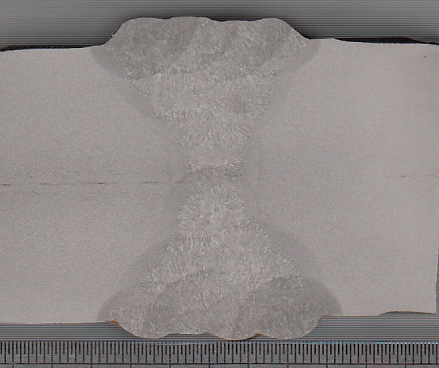Plates cracking down the centreline following welding
Alan Denney
What experience do members of the group have with steel plates cracking down the centreline following making of butt welds either side of the joint to the plate surface? [I am not talking about lamellar tearing – immediately sub-surface]. I am interested in your experience of this, what you considered the reasons to be and if you know or have any published information.
Alan Denney
meisam shokri arfaei

What experience do members of the group have with steel plates cracking down the centreline following making of butt welds either side of the joint to the plate surface? [I am not talking about lamellar tearing – immediately sub-surface]. I am interested in your experience of this, what you considered the reasons to be and if you know or have any published information.
Alan Denney
--
You received this message because you are subscribed to the Google Groups "Materials & Welding" group.
To unsubscribe from this group and stop receiving emails from it, send an email to materials-weld...@googlegroups.com.
To post to this group, send email to material...@googlegroups.com.
Visit this group at http://groups.google.com/group/materials-welding.
To view this discussion on the web visit https://groups.google.com/d/msgid/materials-welding/005101d09539%24de5fd000%249b1f7000%24%40denney1.freeserve.co.uk.
For more options, visit https://groups.google.com/d/optout.
Alan Denney
Dear Meisam Shokri Arfaei
Many thanks for this information and for the macro. I am very keen to find obtain examples of case histories which I can show to colleagues so that they are aware that it is not a new problem, but so far I am not finding any information in the literature. Are you able to help here? If anyone knows of research into this I would be interested to hear – maybe someone’s thesis?
Best wishes
Alan Denney
To view this discussion on the web visit https://groups.google.com/d/msgid/materials-welding/CAC8uMtstScyF31YwXVHfVOKthmyNxK2uyMQua9k7F66xuNUGhA%40mail.gmail.com.
Thiyagarajan Marimuthu
I agreed Sakori...
I have added just my exp. This is not rimmed/ killed steel pblm.
This is typical carbon/pearlitic segregation.
i have exp with SA 516 Gr.70 plates. we have done impact, tensile on particulor location in raw material stage. it was found to meet the specification.
your photo are seems to be minor. defenetly.. it will not lead to any crack.
However..it shld be communicated and eliminated frm supplier end.
Regards
Thiyagarajan M
Welding Metallurgist.
To view this discussion on the web visit https://groups.google.com/d/msgid/materials-welding/000301d09662%2485a35660%2490ea0320%24%40denney1.freeserve.co.uk.
